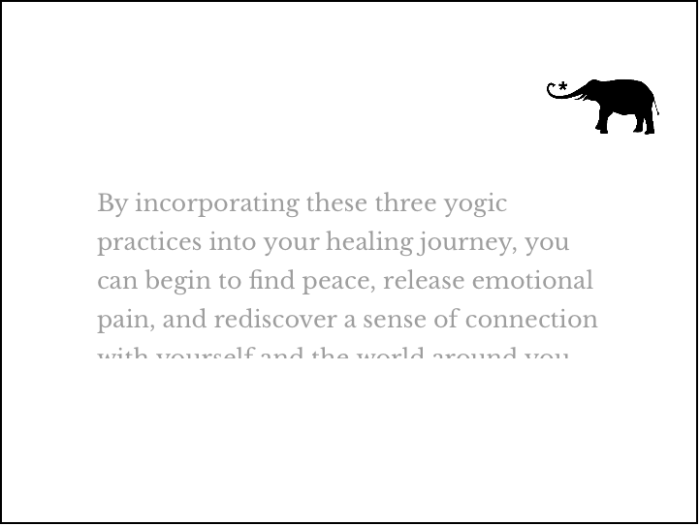Trauma can have a profound impact on our lives, leaving us feeling stuck, disconnected, and overwhelmed. Whether we’ve experienced a single traumatic event or ongoing stress and adversity, trauma can affect us on a physical, emotional, and spiritual level.
Fortunately, there are many ways to support our healing and recovery from trauma, and yogic practices can be a powerful tool in this process. Here are three ways to use yogic practices to help heal trauma:
- Connect with your breath
One of the most accessible and effective ways to use yogic practices to help heal trauma is to connect with your breath. Trauma can disrupt our natural breathing patterns, causing us to hold our breath or breathe shallowly, which can lead to feelings of anxiety, panic, and disconnection.
By focusing on the breath and practicing conscious breathing techniques, we can help regulate the nervous system and bring a sense of calm and relaxation to the body and mind. One simple technique is to take slow, deep breaths in through the nose and out through the mouth, focusing on the sensation of the breath in the body. You can also try alternate nostril breathing or belly breathing to help regulate the breath and calm the nervous system.
- Practice grounding and centering
Another way to use yogic practices to help heal trauma is to practice grounding and centering techniques. Trauma can leave us feeling disconnected from our bodies and the present moment, which can make it difficult to feel safe and secure.
Grounding and centering techniques can help us feel more connected to our bodies and the present moment, which can help us feel more grounded, centered, and safe. One technique is to practice standing or sitting with your feet firmly planted on the ground and feeling the sensation of the earth beneath you. You can also try visualizing a strong, stable object like a tree or mountain and imagining yourself rooted and supported by that object.
- Cultivate self-compassion and mindfulness
Finally, another way to use yogic practices to help heal trauma is to cultivate self-compassion and mindfulness. Trauma can leave us feeling ashamed, guilty, or self-critical, which can make it difficult to feel compassion and kindness towards ourselves.
By practicing self-compassion and mindfulness, we can learn to be more present and accepting of our thoughts, emotions, and experiences, which can help us develop a more positive relationship with ourselves. One technique is to practice self-compassion meditation, where you focus on sending kind, supportive messages to yourself. You can also try mindfulness practices like body scans, where you focus on sensations in the body without judgment or analysis.
In conclusion, yogic practices can be a powerful tool for healing trauma. By connecting with our breath, practicing grounding and centering techniques, and cultivating self-compassion and mindfulness, we can support our healing and recovery from trauma and find greater peace, presence, and joy in our lives.







Read 0 comments and reply